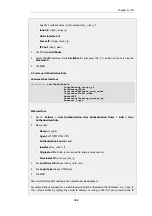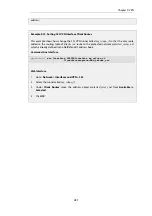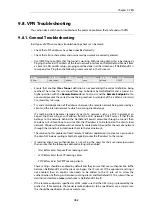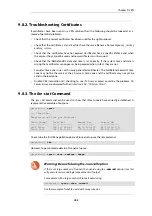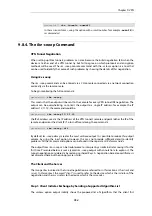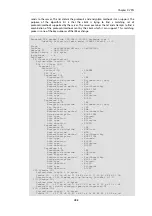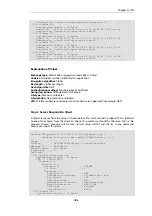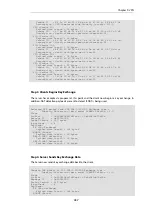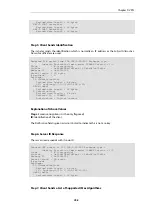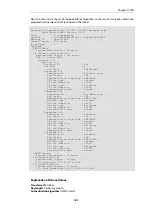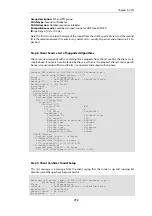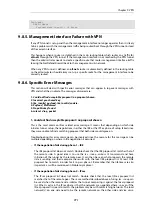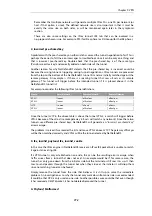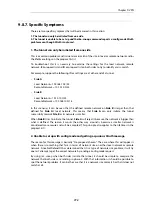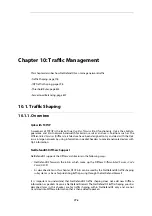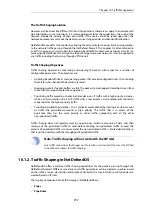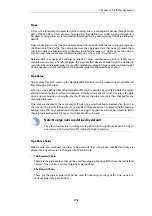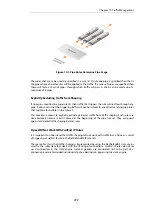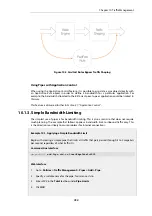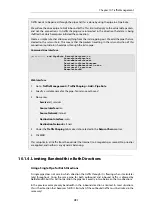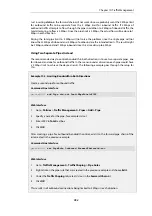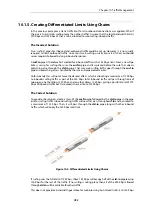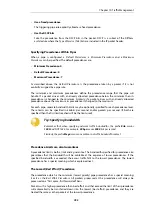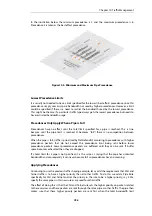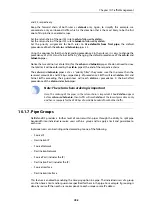
9.8.7. Specific Symptoms
There are two specific symptoms that will be discussed in this section:
1. The tunnel can only be initiated from one side.
2. The tunnel is unable to be set up and theike -snoop command reports a config mode XAuth
problem even though XAuth is not used.
1. The tunnel can only be initiated from one side
This is a common problem and is due to a mismatch of the size in local or remote network and/or
the lifetime settings on the proposal list(s).
To troubleshoot this it is necessary to examine the settings for the local network, remote
network, IKE proposal list and IPsec proposal list on both sides to try to identify a miss-match.
For example, suppose the following IPsec settings are at either end of a tunnel:
•
Side A
Local Network = 192.168.10.0/24
Remote Network = 10.10.10.0/24
•
Side B
Local Network = 10.10.10.0/24
Remote Network = 192.168.10.0/16
In this scenario, it can be seen that the defined remote network on Side B is larger than that
defined for Side A's local network. This means that Side A can only initiate the tunnel
successfully towards Site B as its network is smaller.
When Side B tries to initiate the tunnel, Side A will reject it because the network is bigger than
what is defined. The reason it works the other way around is because a smaller network is
considered more secure and will be accepted. This principle also applies to the lifetimes in the
proposal lists.
2. Unable to set up with config mode and getting a spurious XAuth message
The reason for this message is basically "No proposal chosen". The case where this will appear is
when there is something that fails in terms of network size on either local network or remote
network. Since NetDefendOS has determined that it is a type of network size problem, it will try
one last attempt to get the correct network by sending a config mode request.
By using
ike -snoop
when both sides initiate the tunnel, it should be simple to compare the
network that both sides are sending in phase-2. With that information it should be possible to
spot the network problem. It can be the case that it is a network size mismatch or that it does not
match at all.
Chapter 9: VPN
774
Summary of Contents for NetDefendOS
Page 30: ...Figure 1 3 Packet Flow Schematic Part III Chapter 1 NetDefendOS Overview 30 ...
Page 32: ...Chapter 1 NetDefendOS Overview 32 ...
Page 144: ...Chapter 2 Management and Maintenance 144 ...
Page 284: ...Chapter 3 Fundamentals 284 ...
Page 392: ...Chapter 4 Routing 392 ...
Page 419: ... Host 2001 DB8 1 MAC 00 90 12 13 14 15 5 Click OK Chapter 5 DHCP Services 419 ...
Page 420: ...Chapter 5 DHCP Services 420 ...
Page 573: ...Chapter 6 Security Mechanisms 573 ...
Page 607: ...Chapter 7 Address Translation 607 ...
Page 666: ...Chapter 8 User Authentication 666 ...
Page 775: ...Chapter 9 VPN 775 ...
Page 819: ...Chapter 10 Traffic Management 819 ...
Page 842: ...Chapter 11 High Availability 842 ...
Page 866: ...Default Enabled Chapter 13 Advanced Settings 866 ...
Page 879: ...Chapter 13 Advanced Settings 879 ...

